OSHA 10 & 30 Hour Training
for the General Industry
OSHA 10 & 30 Hour Training
for the General Industry


ESC employs their own instructors authorized by OSHA and trained through OSHA Training Institute Education Centers. ESC instructors who perform the 10 or 30 Hour Outreach Training Program possess a OSHA 500 and/or 501 certification. Our training is packed with jobsite hazards or accident illustrations and photos that where discovered by our Field Safety Professionals. We Guarantee that our classroom instruction is engaging and informative. Each student is provided an official OSHA Construction regulations book to help understand OSHA requirements. Students receive a certificate of completion and the official OSHA Outreach Training wallet card.
OSHA 10 Hour
The two day training is comprised of seven mandatory training topics, two hours of elective topics and one hour of optional industry-related topics.
Two Hours
- Intro to OSHA, OSH Act/General Duty Clause, Employee Rights and Responsibilities, Whistleblower Rights, Recordkeeping Basics
- Inspections, Citations and Penalties
- Value of Safety and Health
- OSHA Website, Available Resources, and 800#
Five Hours
- Walking and Working Surfaces, Subpart D, including Fall Protection
- Exit Routes, Emergency Action Plans, Fire Prevention Plans, and Fire Protection, Subparts E & L
- Electrical, Subpart S
- Personal Protective Equipment (PPE), Subpart I
- Hazard Communication, Subpart Z
Elective Topics (to cover two hours)
- Hazardous Materials (Flammable and Combustible Liquids, Compressed Gases, Dipping and Coating), Subpart H
- Materials Handling, Subpart N
- Machine Guarding, Subpart O
- Introduction to Industrial Hygiene, Subpart Z
- Blood borne Pathogens, Subpart Z
- Ergonomics
- Safety and Health Management Programs
Optional Industry Topics (one hour)
- Hazardous waste operations and emergency response (HAZWOPER)
- Process safety management
- Lockout/tagout
- Confined spaces
- Welding, cutting and brazing
- Workplace violence
- General environmental controls
- OSHA recordkeeping
- Improving your company's safety record
- Designing emergency plans
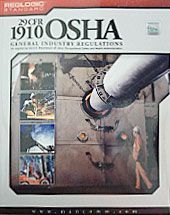
Each student is provided an official OSHA General Industry regulations book to help understand OSHA requirements.
This book includes the complete Part 1910 - General Industry, Part 1903 - Inspections, Citations and Proposed Penalties, 1904 - Recording and Reporting Occupational Injuries and Illnesses regulations, and Part 1928 - Occupational Safety and Health Standards for Agriculture regulations, as well as Letters of Interpretation.
OSHA 30 Hour
The four day OSHA 30 Hour General Industry training program provides instruction on a wide variety of safety and health standards. The training meets OSHA requirements, and provides instruction specific to your operation.
Two Hours
- Intro to OSHA, OSH Act/General Duty Clause, Employee Rights and Responsibilities, Whistleblower Rights, Recordkeeping Basics
- Inspections, Citations and Penalties
- Value of Safety and Health
- OSHA Website, Available Resources, and 800#
At least One Hour each
- Walking and Working Surfaces, Subpart D, including Fall Protection
- Personal Protective Equipment (PPE), Subpart I
- Hazard Communication, Subpart Z
At least Two Hours each
- Walking and Working Surfaces, Subpart D, including Fall Protection
- Electrical, Subpart S
- Materials Handling, Subpart N
Optional Topics (choose at least 5 of the following topics)
- Hazardous Materials (Flammable and Combustible Liquids, Compressed Gases, Dipping and Coating), Subpart H
- Permit-required Confined Spaces, Subpart J
- Lockout/tagout, Subpart J
- Machine Guarding, Subpart O
- Welding, Cutting and Brazing, Subpart Q
- Introduction to Industrial Hygiene, Subpart Z
- Blood borne Pathogens, Subpart Z
- Ergonomics
- Fall Protection
- Safety and Health Programs
- Powered Industrial Vehicles
The remainder of the training can focus on other standards, policies or expand on the required topics.
- OSHA recordkeeping
- Surprising ways many training programs fall short in OSHA's eyes and identifying how your program measures up.
- Proven, cost effective ways to improve your company's safety record
- Designing emergency plans
- How to conform to chemical labeling requirements

Additional Content Includes:
- OSHA Forms 300, 300A and 301
- Sharps Injury Log
- NAICS Codes
- State Office Directory, Regional and National Offices
- Incidence Rates of Non-fatal Occupational Injuries and Illnesses
- Most Common Standards Cited for Construction
- Letters of Interpretation
- Recent Changes in Regulations
ESC Safety Consultants is proud to be associated with

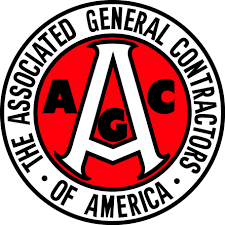

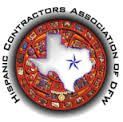


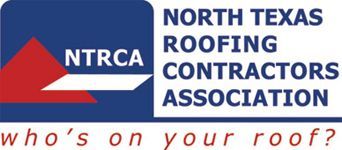
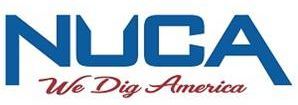
Providing A Safe Workplace For Construction & General Industries Since 1981
Providing A Safe Workplace For Construction & General Industries Since 1981
Contact Information
1307 North Glenville Drive
Richardson, Texas 75081
Phone: (214) 575-8710
Toll Free: (800) 327-1516
Company Links


